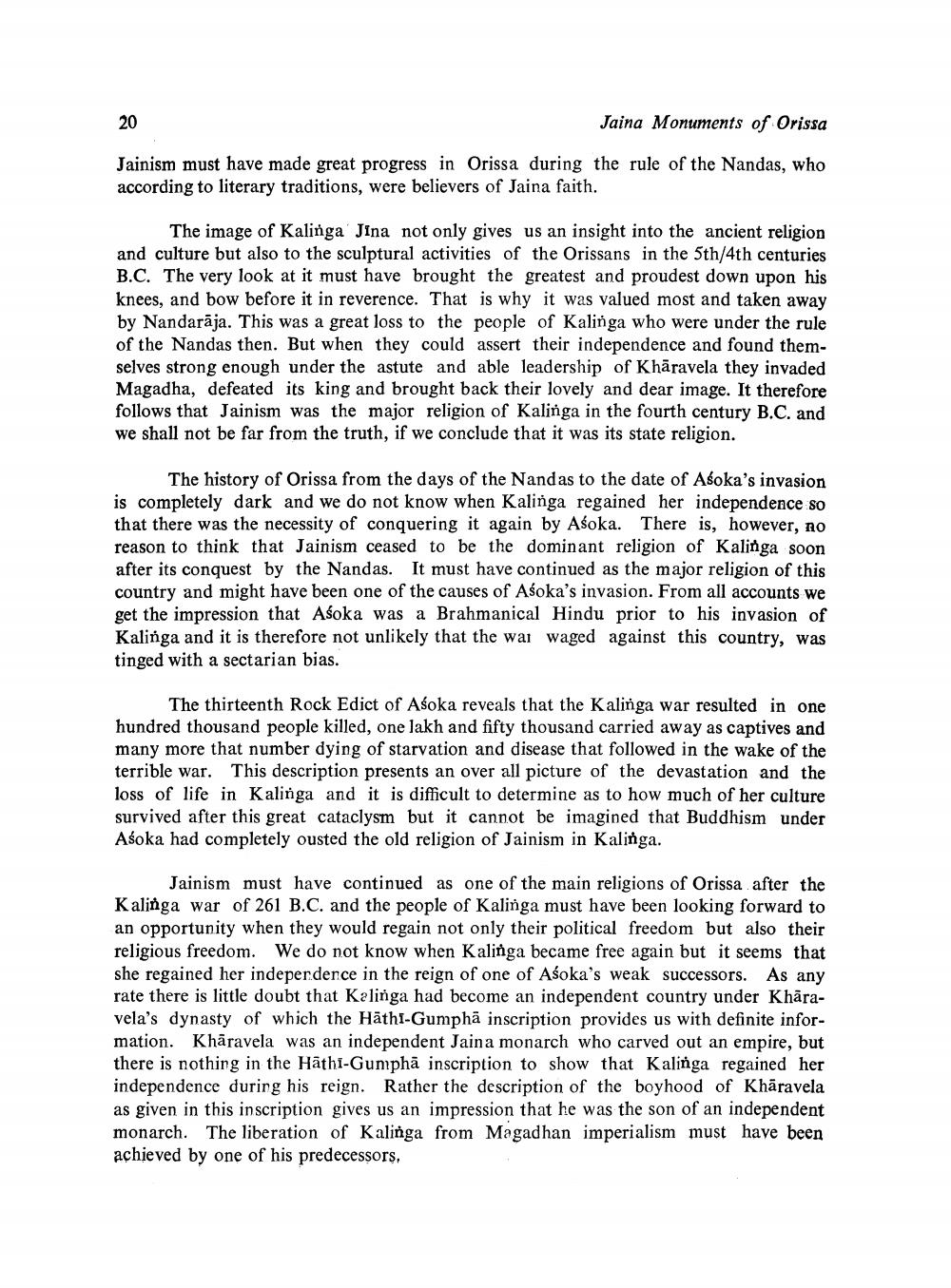________________
20
Jaina Monuments of Orissa
Jainism must have made great progress in Orissa during the rule of the Nandas, who according to literary traditions, were believers of Jaina faith.
The image of Kalinga Jina not only gives us an insight into the ancient religion and culture but also to the sculptural activities of the Orissans in the 5th/4th centuries B.C. The very look at it must have brought the greatest and proudest down upon his knees, and bow before it in reverence. That is why it was valued most and taken away by Nandarāja. This was a great loss to the people of Kalinga who were under the rule of the Nandas then. But when they could assert their independence and found themselves strong enough under the astute and able leadership of Khāravela they invaded Magadha, defeated its king and brought back their lovely and dear image. It therefore follows that Jainism was the major religion of Kalinga in the fourth century B.C. and we shall not be far from the truth, if we conclude that it was its state religion.
The history of Orissa from the days of the Nandas to the date of Asoka's invasion is completely dark and we do not know when Kalinga regained her independence so that there was the necessity of conquering it again by Aśoka. There is, however, no reason to think that Jainism ceased to be the dominant religion of Kalinga soon after its conquest by the Nandas. It must have continued as the major religion of this country and might have been one of the causes of Asoka's invasion. From all accounts we get the impression that Asoka was a Brahmanical Hindu prior to his invasion of Kalinga and it is therefore not unlikely that the war waged against this country, was tinged with a sectarian bias.
The thirteenth Rock Edict of Asoka reveals that the Kalinga war resulted in one hundred thousand people killed, one lakh and fifty thousand carried away as captives and many more that number dying of starvation and disease that followed in the wake of the terrible war. This description presents an over all picture of the devastation and the loss of life in Kalinga and it is difficult to determine as to how much of her culture survived after this great cataclysm but it cannot be imagined that Buddhism under Asoka had completely ousted the old religion of Jainism in Kalinga.
Jainism must have continued as one of the main religions of Orissa after the Kalinga war of 261 B.C. and the people of Kalinga must have been looking forward to an opportunity when they would regain not only their political freedom but also their religious freedom. We do not know when Kalinga became free again but it seems that she regained her indeperdence in the reign of one of Asoka's weak successors. As any rate there is little doubt that Kalinga had become an independent country under Khāravela's dynasty of which the Häthi-Gumphā inscription provides us with definite information. Khāravela was an independent Jaina monarch who carved out an empire, but there is nothing in the Hathi-Gumphā inscription to show that Kalinga regained her independence during his reign. Rather the description of the boyhood of Khāravela as given in this inscription gives us an impression that he was the son of an independent monarch. The liberation of Kalinga from Magadhan imperialism must have been achieved by one of his predecessors,




